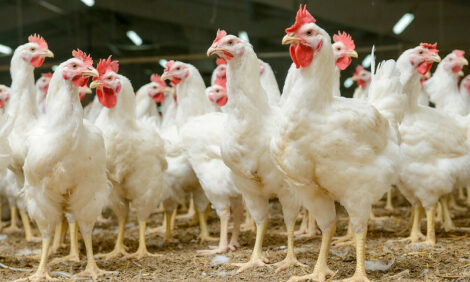



Anticipating the 1 March Corn Stocks Estimate
US - It is widely anticipated that the 2012-13 corn marketing year will be a transition from the current environment of tight stocks and high prices to one of a large crop, increasing stocks, and lower prices, writes Darrel Good.The futures market reflects that expectation as the March 2013 futures price is currently trading $0.80 to $0.85 below the March 2012 price.
While there is general agreement on the likely direction of production and stocks in the year ahead, there is considerable uncertainty about magnitudes. That uncertainty starts with the likely level of stocks at the end of the current marketing year. Some light will be shed on that issue, as well as the potential size of the 2012 crop, when the USDA releases the quarterly Grain Stocks and the annual Prospective Plantings reports on 30 March.
A calculation of the likely level of stocks on March 1 is based on the 1 December stocks estimate and the estimated magnitude of consumption from December through February. Anticipating the magnitude of 1 March corn inventories is made more difficult by the surprising quarterly stocks estimates released over the past two years and the resulting inconsistencies in the implied magnitude of quarterly feed and residual use of corn since the spring of 2010.
Based on the level of cumulative export inspections through February and the difference between cumulative inspections and Census Bureau export estimates through December, corn exports during the December-February quarter were near 450 million bushels. The Census Bureau estimate of January exports will be released on March 9 and the estimate of February exports will not be available until April 12.
Based on weekly estimates from the US Energy Information Administration, ethanol production during the December-February quarter was 3.7 per cent larger than during the same quarter last year. Assuming the same rate of conversion from corn to ethanol, corn used for ethanol and co-product production during the quarter is estimated at 1.3 billion bushels. The USDA has projected corn use for seed and other food and industrial products at the same level as last year’s use. If that pattern persisted during the quarter, use in that category was near 320 million bushels.
As mentioned above, anticipating the level of quarterly feed and residual use of corn, which is always difficult, has been complicated by the recent inconsistent quarterly estimates. Expectations may also be influenced by the unusually mild winter and the implied increase in feed efficiency relative to that in a more normal winter. As a starting point, we estimate use based on the USDA’s projection of use for the year of 4.6 billion bushels and an estimate of "normal" seasonal consumption patterns. But, what is normal? Over the past four years, the proportion of annual feed and residual use occurring in the first half of the year has been very inconsistent, ranging from 65.5 to 75.8 per cent, and generally very high, averaging 70 per cent. In the five years prior to that, use in the first half of the year ranged from 61.7 to 66.3 per cent and averaged 63.9 per cent.
If the USDA’s projection of feed and residual use for the year is correct and 64 per cent was consumed in the first half of the year, consumption in the December-February quarter would have been only 1.11 billion bushels, the lowest level in 23 years. Total consumption during the quarter would have been near 3.18 billion bushels and 1 March stocks would have been near 6.466 billion bushels. If 70 per cent of projected feed and residual use occurred in the first half of the year, 1 March stocks would be projected at 6.195 billion bushels. The range is unusually large and estimates at either extreme might bring the USDA projection of feed and residual use for the year into question.
Recent and ongoing corn price behavior has some expecting a relatively small estimate of 1 March stocks. The ongoing strong basis and recent inversion in futures prices implies some combination of slow movement of corn to the market, relatively small supplies, and a higher rate of consumption than forecast. That higher rate of consumption would have to be in the feed sector since use in other categories is transparent. The current price structure underscores the importance of the March 1 stocks estimate and the amount of supply rationing, if any, needed during the remainder of the marketing year.
The magnitude of corn planting intentions for 2012 has obvious price implications, but there seems to be more agreement on intentions. Expectations center on the USDA benchmark of 94 million acres, about two million more than planted in 2011. The big unknown is the 2012 average corn yield. The USDA has started with a projection of 164 bushels, well above the trend calculation for the year.








